Web Design 2025: AI, Sustainability, and Hyper-Personalized Experiences

Explore the top web design trends of 2025: leveraging AI, embracing sustainability, and creating hyper-personalized user experiences to boost conversion rates.
Web Design Trends in 2025: Entering a New Era

The web design industry is undergoing a major revolution, driven by the rapid development of technology and changing user expectations. 2025 promises to be a pivotal year, witnessing the dominance of groundbreaking web design trends. This article will delve into the three most important trends that web designers need to embrace to succeed in the future.
1. The Application of Artificial Intelligence (AI) in Web Design
Artificial intelligence (AI) is no longer a fantasy concept but has become an essential tool in many fields, and web design is no exception. AI is helping web designers optimize workflows, create compelling content, and personalize user experiences more effectively.
AI Automating the Design Process
AI can automate many repetitive tasks in the web design process, freeing designers from tedious work and allowing them to focus on more creative aspects. For example, AI can help create automated wireframes and mockups based on client requirements, suggest optimal website layouts based on user data, or even automatically adjust designs to fit different screen sizes.
AI Content Creation
Creating high-quality content is a major challenge for many web designers. AI can help solve this problem by generating text, images, and videos automatically. AI tools can analyze user data and create content tailored to individual preferences and needs. However, it is important to ensure that AI-generated content remains creative and engaging, and does not infringe on copyright.
AI Personalizing the User Experience
AI can be used to personalize the user experience on websites. For example, AI can analyze user behavior and display products or services that match their interests. AI can also adjust the website's interface to suit each user's browsing habits. This personalization can help increase user engagement and improve conversion rates.
2. Sustainable Web Design: The Future of the Internet
In the context of increasingly severe climate change, sustainable web design is becoming an important trend. Sustainable web design focuses on minimizing the negative impact of websites on the environment, through energy conservation, the use of renewable resources, and performance optimization.
Energy-Saving Design Methods
There are many energy-saving design methods that web designers can apply. For example, using dark colors can help reduce the amount of energy consumed by the screen. Optimizing images and videos can also help reduce file sizes and page load times, thereby reducing the amount of energy consumed by servers and user devices.
Using Renewable Resources
Using renewable resources is an important part of sustainable web design. For example, web designers can use images and videos licensed under Creative Commons licenses, or use free fonts. In addition, choosing green hosting, which uses renewable energy to power servers, is also an effective way to minimize environmental impact.
Optimizing Page Load Speed
Page load speed is a critical factor in sustainable web design. Slow-loading websites consume more energy and annoy users. Web designers can optimize page load speed by compressing images, using caching, and minimizing the number of HTTP requests.
**Vinawebapp.com**, with its years of experience in web design in Da Nang, always focuses on optimizing page load speed, helping customers get websites that are not only beautiful but also environmentally friendly.
3. Hyper-Personalized User Experience (UX): Meeting the Individual Needs of Each Person
Hyper-personalized user experience (UX) is an emerging trend in web design. Hyper-personalized UX focuses on creating websites tailored to each specific user, based on data and AI. The goal is to create a smooth, engaging, and effective browsing experience that helps increase user engagement and conversion rates.
Using Data to Personalize the Experience
Data is the key to hyper-personalized UX. Web designers can collect data about user behavior, their preferences, and demographic information to create websites tailored to each individual. For example, if a user frequently buys sports products on a website, the website can display similar sports products or sports-related promotions to that user.
Using AI to Optimize the Experience
AI can be used to optimize hyper-personalized UX. For example, AI can analyze user data and automatically adjust website layouts, content, and other features to suit each individual. AI can also learn from user feedback and continuously improve the experience over time.
Enhancing Engagement and Conversion Rates
Hyper-personalized UX can help enhance engagement and conversion rates on websites. When users feel that a website understands their needs and provides them with relevant information and products, they are more likely to interact with the website and take desired actions, such as making a purchase or signing up for a service.
Advice for Web Designers
To prepare for the web design trends of 2025, web designers need to equip themselves with new skills and knowledge. They need to learn how to use AI tools to automate the design process, create compelling content, and personalize the user experience. They also need to learn about sustainable web design and hyper-personalized UX methods. **Vinawebapp.com** advises that designers should also update their knowledge of SEO to ensure the website is designed optimized for search engines.
SEO and Web Design Trends 2025
Web design trends in 2025 are closely linked to SEO. For example, optimizing page load speed is an important factor in both sustainable web design and SEO. Faster loading websites tend to rank higher on search engines. Similarly, hyper-personalized UX can help increase user engagement, which can also improve a website's ranking on search engines. Web designers need to be aware of this connection and design websites that are both visually appealing, user-friendly, and optimized for SEO.

